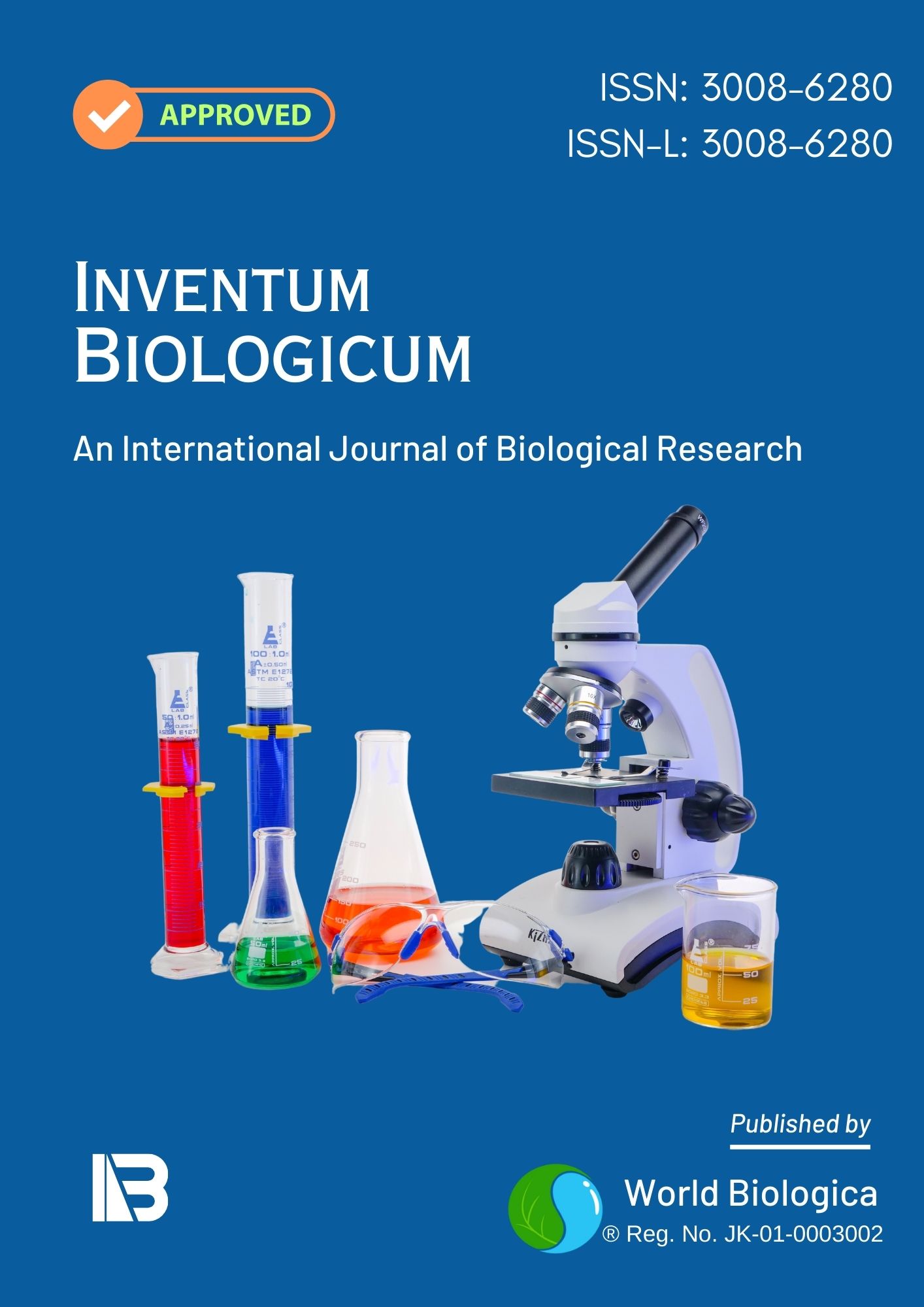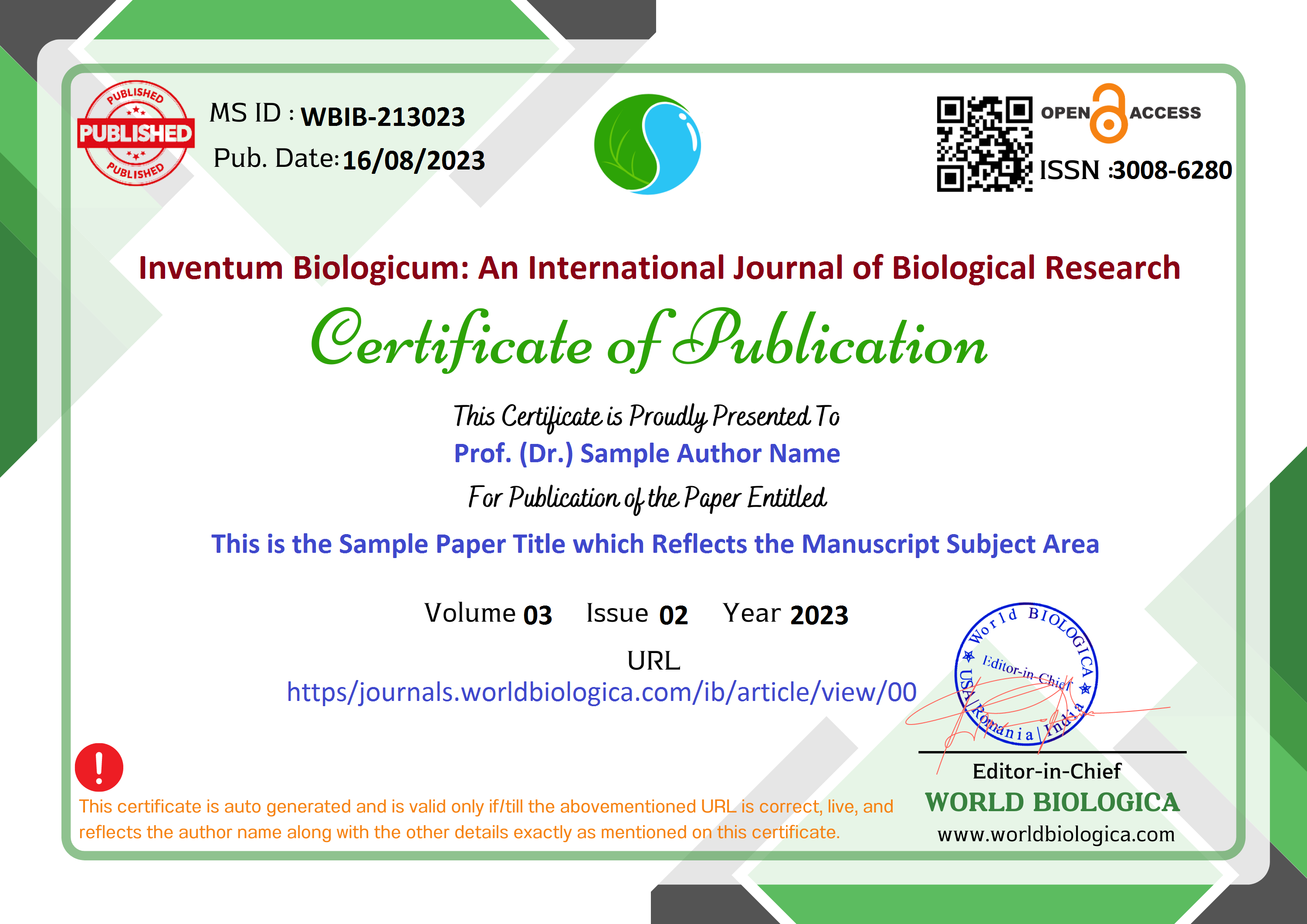A Preliminary Study to Assess the Avifaunal Diversity of Basohli Tehsil, District Kathua, J&K
الكلمات المفتاحية:
Avifauna، Diversity، Basohli، Line Transect، Point Transectالملخص
Birds act as important key component of the earth’s biodiversity. The main objective of the study was to assess the diversity of birds from three study sites of Basohli region of Kathua district selected for study for four months in 2023 (April-July). Data to assess the diversity were collected using two methods, line and point count techniques in the early morning (6:00-9:00 a.m.) and late afternoon (4:00-6:00 p.m.) in each of these sites for three consecutive days. During this study, a total of 20 species of birds were collected from the different locations belonging to 16 families viz. Pycnonotidae, Estrildidae, Sturnidae, Passeridae, Dicuridae, Corvidae, Hirundinidae, Leothrichidae, Lannidae, Icteridae, Paridae, Sittidae, Columbidae, Picidae, Megalaimidae, Psittaculidae and 5 orders viz. Passeriformes, Columbiformes, Piciformes, Psittaciformes, Pelcaniformes and it revealed the dominance of order Passeriformes with 15 species belonging to this order. However, the study area particularly comprised of human involvements and activities. More surveys and studies are required further to make a complete list of available bird species in these study sites for their conservation.
التنزيلات
المراجع
Ali S (2002). The book of Indian birds. Thirteenth Edition Published by Bombay Natural History Societ, Oxford University Press, Mumbai, India.
Bhat BA and Bhat GA (2012). Distribution of avifauna in Yusmarg forest-Jammu and Kashmir, India. International Journal of Current Research, 4(5): 52-56.
Hussain S and Kait R (2013). Studies on avian diversity of Tehsil Mendhar, Poonch, J and K, India. Journal of Biosphere, 2(1): 66-71.
Syed G (2014). Avifauna and its conservation in Dal Lake. International Journal of Current Research, 6(2): 49114915.
Kichloo MA, Sohil A, Kumar P and Sharma N (2018). Avian diversity at new campus of University of Jammu, Jammu and Kashmir. Researcher: A Miltidisciplinary Journal, 13(2): 28-40.
Sohil A and Sharma N (2019). A preliminary Survey of Bird Communities around Jammu, (Jammu and Kashmir). Biological Forum - An International Journal, 11(2): 2749.
Aggarwal S, Sahi DN and Wani A (2008). Feeding guilds of avifauna of Nandni Wildlife Sanctuary, Jammu (Jammu and Kashmir). The Ecoscan, 2(2): 157-160.
Olechnowski BF (2009). An examination of songbird avian diversity, abundance trends, and community composition in two endangered temperate ecosystems: Riparian willow habitat of the Greater Yellowstone Ecosystem and a restored tallgrass prairie ecosystem, Neal Smith National Wildlife. RefugeIowa State University. Lowa State University.
Helm B (2006). Zugunruhe of migratory and non-migratory birds in a circannual context. Journal of Avian Biology, 37: 533-540.
Parmar TK, Rawtani D and Agrawal YK. (2016). Bioindicators: the natural indicator of environmental pollution. Frontiers in life science, 9(2), 110-118.
Kumar A, Chaube RP and Kanaujia A (2018). New records of birds from the Shahid Chandra Shekhar Azad bird sanctuary (SCSABS) of Unnao, Uttar Pradesh, India. Journal of Wildlife Research, 06(2): 17-23.
Puri SD and Virani RS. (2016). Avifaunal diversity from Khairbandha Lake in Gondia district, Maharashtra State, India. Bioscience Discovery, 7(2), 140-146.
Bhadja P and Vaghela A. (2013). Study on avifaunal diversity from two freshwater reservoirs of Rajkot, Gujarat, India. International Journal of Research in Zoology, 3(2), 16-20.
Lad D and Patil S. (2015). Status and diversity of avian fauna in the estuarine wetland area of Bhayander and Naigaon, Maharashtra, India. Bioscience Discovery, 6(1), 39-44.
Gupta RC, Kaushik TK and Kumar, S. (2010). Evaluation of the extent of wetland birds in district Kaithal, Haryana, India. Journal of Applied and Natural Science, 2(1), 77-84.
Ali S and Ripley SD. (1983). Handbook of the Birds of India and Pakistan. Compact Edn. Oxford University Press, Delhi. Pp. 737.
Grimmett R, Inskipp C and Inskipp T. (2019). Field Guide to Birds of the Indian Subcontinent: India, Pakistan, Sri Lanka, Nepal, Bhutan, Bangladesh and the Maldives. Bloomsbury Publishing.
Sharma K K and Saini M. (2012). Impact of anthropogenic pressure on habitat utilization by the waterbirds in Gharana Wetland (Reserve), Jammu, India. International Research Journal of Biological Sciences, 3(2):1-8.
التنزيلات
منشور
كيفية الاقتباس
إصدار
القسم
الرخصة
الحقوق الفكرية (c) 2024 Inventum Biologicum: An International Journal of Biological Research

هذا العمل مرخص بموجب Creative Commons Attribution-NonCommercial-NoDerivatives 4.0 International License.













